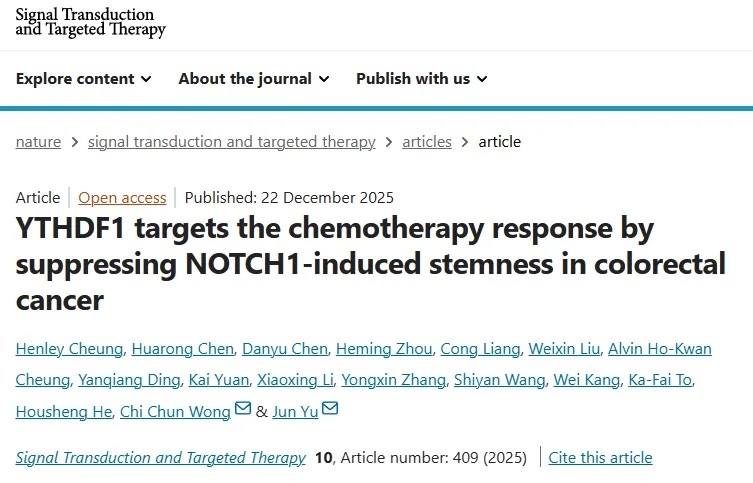Blood:白血病细胞蛋白相互作用子网络图能够预测病情发展
| 导读 | <em></em>
<p align="center"><img src="http://www.bioon.com/biology/UploadFiles/201207/2012072916330848.jpg" alt="" width="185" height=&quo... |
<em></em>
<p align="center"><img src="http://www.bioon.com/biology/UploadFiles/201207/2012072916330848.jpg" alt="" width="185" height="185" border="0" /></p>
利用一种新的检测方法来研究肿瘤细胞,来自美国加州大学圣地亚哥分校的研究人员发现慢性淋巴细胞白血病(chronic lymphocytic leukemia, CLL)存在克隆进化(clonal evolution)的证据。这种检测方法能够区分白血病细胞的特征从而表明这种疾病是侵袭性的还是缓慢性的,这在人们决定何时和如何治疗病人中发挥着关键性作用。相关研究论文于2012年7月26日在线发表<em>在Blood</em>期刊上。
<!--more-->
现存的侵袭性或进展缓慢的慢性淋巴细胞白血病(CLL)标记物大多数都是固定的,而且在病人初始被诊断患上CLL之后,时间越久,这些标记物的预测性价值也随之下降。当病人的血液样品被收集时,这些标记物不能可靠地预测一名CLL病人是否很快需要接受治疗,特别是当这名病人被诊断患上CLL多年之后。
论文通信作者Thomas J. Kipps博士和同事们研究了来自130名有不同程度的风险发生疾病恶化的CLL病人身上的上千种基因,特别是那些编码蛋白的基因。他们鉴定出38个相互作用基因和蛋白的预后子网络,并且在收集样品时,这些子网络能够表明这种疾病的相对侵袭性和预测病人是否需要接受治疗。
这些预后子网络提供更好的预测性价值,这是因为它们并不是基于单个基因或蛋白的表达水平,而是基于它们如何动态地相互作用和随着时间推移如何发生变化,从而能够影响CLL和病人症状的发展过程。
这项研究可能改变科学家们如何思考CLL和临床医生如何治疗这种这种疾病:是更好地等待疾病发展到后期:肿瘤细胞更加脆弱和更容易杀死,还是在疾病早期积极地治疗缓慢性发展的肿瘤细胞:它们的数量更少但是更难发现和更加抵抗治疗。
本文编译自<a href="http://medicalxpress.com/news/2012-07-tumor-cells-cancer.html" target="_blank">Tumor cells' inner workings predict cancer progression</a>
<div id="ztload">
<div> </div>
<div>
<div>
<img src="http://www.bioon.com/biology/UploadFiles/201207/2012072916321055.gif" alt="" width="113" height="149" border="0" />
<a title="" href="http://dx.doi.org/10.1182/blood-2012-03-416461" target="_blank">doi: 10.1182/blood-2012-03-416461</a>
PMC:
PMID:
</div>
<div>
<br/><strong>Subnetwork-based analysis of chronic lymphocytic leukemia identifies pathways that associate with disease progression</strong><br/>
Han-Yu Chuang1, Laura Rassenti2, Michelle Salcedo3, Kate Licon4, Alexander Kohlmann5, Torsten Haferlach6, Robin Foà7, Trey Ideker1, and Thomas J. Kipps
The clinical course of patients with chronic lymphocytic leukemia (CLL) is heterogeneous. Several prognostic factors have been identified that can stratify patients into groups that differ in their relative tendency for disease progression and/or survival. Here, we pursued a subnetwork-based analysis of gene expression profiles to discriminate between groups of patients with disparate risks for CLL progression. From an initial cohort of 130 patients, we identified 38 prognostic subnetworks that could predict the relative risk for disease progression requiring therapy from the time of sample collection, more accurately than established markers. The prognostic power of these subnetworks then was validated on two other cohorts of patients. We noted reduced divergence in gene expression between leukemia cells of CLL patients classified at diagnosis with aggressive versus indolent disease over time. The predictive subnetworks vary in levels of expression over time but exhibit increased similarity at later time points prior to therapy, suggesting that degenerate pathways apparently converge into common pathways that are associated with disease progression. As such, these results have implications for understanding cancer evolution and for the development of novel treatment strategies for patients with CLL.
<em>全球分子诊断网(</em><em>www.zhenduan.org</em><em>)</em><em></em>
</div>
</div>
</div>
<p align="center"><img src="http://www.bioon.com/biology/UploadFiles/201207/2012072916330848.jpg" alt="" width="185" height="185" border="0" /></p>
利用一种新的检测方法来研究肿瘤细胞,来自美国加州大学圣地亚哥分校的研究人员发现慢性淋巴细胞白血病(chronic lymphocytic leukemia, CLL)存在克隆进化(clonal evolution)的证据。这种检测方法能够区分白血病细胞的特征从而表明这种疾病是侵袭性的还是缓慢性的,这在人们决定何时和如何治疗病人中发挥着关键性作用。相关研究论文于2012年7月26日在线发表<em>在Blood</em>期刊上。
<!--more-->
现存的侵袭性或进展缓慢的慢性淋巴细胞白血病(CLL)标记物大多数都是固定的,而且在病人初始被诊断患上CLL之后,时间越久,这些标记物的预测性价值也随之下降。当病人的血液样品被收集时,这些标记物不能可靠地预测一名CLL病人是否很快需要接受治疗,特别是当这名病人被诊断患上CLL多年之后。
论文通信作者Thomas J. Kipps博士和同事们研究了来自130名有不同程度的风险发生疾病恶化的CLL病人身上的上千种基因,特别是那些编码蛋白的基因。他们鉴定出38个相互作用基因和蛋白的预后子网络,并且在收集样品时,这些子网络能够表明这种疾病的相对侵袭性和预测病人是否需要接受治疗。
这些预后子网络提供更好的预测性价值,这是因为它们并不是基于单个基因或蛋白的表达水平,而是基于它们如何动态地相互作用和随着时间推移如何发生变化,从而能够影响CLL和病人症状的发展过程。
这项研究可能改变科学家们如何思考CLL和临床医生如何治疗这种这种疾病:是更好地等待疾病发展到后期:肿瘤细胞更加脆弱和更容易杀死,还是在疾病早期积极地治疗缓慢性发展的肿瘤细胞:它们的数量更少但是更难发现和更加抵抗治疗。
本文编译自<a href="http://medicalxpress.com/news/2012-07-tumor-cells-cancer.html" target="_blank">Tumor cells' inner workings predict cancer progression</a>
<div id="ztload">
<div> </div>
<div>
<div>
<img src="http://www.bioon.com/biology/UploadFiles/201207/2012072916321055.gif" alt="" width="113" height="149" border="0" />
<a title="" href="http://dx.doi.org/10.1182/blood-2012-03-416461" target="_blank">doi: 10.1182/blood-2012-03-416461</a>
PMC:
PMID:
</div>
<div>
<br/><strong>Subnetwork-based analysis of chronic lymphocytic leukemia identifies pathways that associate with disease progression</strong><br/>
Han-Yu Chuang1, Laura Rassenti2, Michelle Salcedo3, Kate Licon4, Alexander Kohlmann5, Torsten Haferlach6, Robin Foà7, Trey Ideker1, and Thomas J. Kipps
The clinical course of patients with chronic lymphocytic leukemia (CLL) is heterogeneous. Several prognostic factors have been identified that can stratify patients into groups that differ in their relative tendency for disease progression and/or survival. Here, we pursued a subnetwork-based analysis of gene expression profiles to discriminate between groups of patients with disparate risks for CLL progression. From an initial cohort of 130 patients, we identified 38 prognostic subnetworks that could predict the relative risk for disease progression requiring therapy from the time of sample collection, more accurately than established markers. The prognostic power of these subnetworks then was validated on two other cohorts of patients. We noted reduced divergence in gene expression between leukemia cells of CLL patients classified at diagnosis with aggressive versus indolent disease over time. The predictive subnetworks vary in levels of expression over time but exhibit increased similarity at later time points prior to therapy, suggesting that degenerate pathways apparently converge into common pathways that are associated with disease progression. As such, these results have implications for understanding cancer evolution and for the development of novel treatment strategies for patients with CLL.
<em>全球分子诊断网(</em><em>www.zhenduan.org</em><em>)</em><em></em>
</div>
</div>
</div>
 腾讯登录
腾讯登录
还没有人评论,赶快抢个沙发